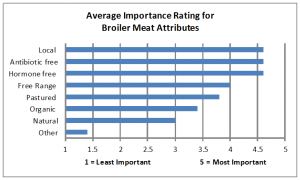UVM Extension Ag Engineer Chris Callahan will be offering crop storage workshops this fall. Click this link for details on events in October: Crop Storage Workshops
Inventory turnover and asset turnover are key factors to consider when you make the investment in crop storage. “Turnover” ratios provide efficiency measures that reveal how much bang you get for your buck. Here are two possible ways to improve these ratios: a) select high “value per volume” products for long term storage and b) move more product through the storage unit over the course of the year (more turns).
Quick example 1: Farmer Mark grows $25,000 of potato and has them all in storage on January 1. He sells them all winter and hits gross sales of $22,000 (there are always losses!). The cooler sits empty until next season. Thats 1 turn on the inventory, not so great. How could he improve? He could grow a $15,000 beet crop that fills the storage unit from July – October before the potatoes go into storage. Now he’s moving more product and increasing efficiencies by getting more product sales from the same storage investment.
Quick Example 2: Farmer Beth fills a walk in cooler with a variety of root crops in October, turnips, carrots, beets and even some cabbage. She wants to increase her profits next year. She wants to figure out which crop is worth the most in relation to the volume it requires. To keep it simple, she fills a .5 bushel box with each crop and multiplies weight x sell price. She could drop the lowest value per volume crop and grow more of the higher value per volume crop. She better factor in her marketing plan the selling costs though, high value crops may cost more to market…better keep the calculator out.
Click this link for October Crop Storage Workshops

 The reports provides details about which attributes consumers are looking for in poultry products and also the specific service expectations that small grocers have for farms selling them them poultry.
The reports provides details about which attributes consumers are looking for in poultry products and also the specific service expectations that small grocers have for farms selling them them poultry.